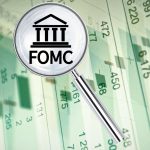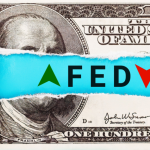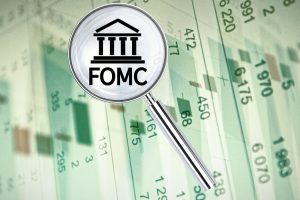The “Sell in May and Go Away” strategy is a widely debated approach in the world of investing. Many consider it a myth, while others consider it a potential opportunity to optimize their portfolios. However, this year, there are three compelling reasons investors should seriously consider implementing the “Sell in May and Go Away” strategy.
Firstly, historical data supports the effectiveness of the “Sell in May and Go Away” strategy. Over the years, analysis of market patterns has revealed a consistent trend of underperformance during the summer months. This evidence provides a compelling argument for investors to consider selling their stocks in May and reentering the market later.
Secondly, the current market conditions lend weight to the strategy’s potential success. With various economic uncertainties and geopolitical tensions impacting global markets, a cautious approach might be beneficial. By mitigating exposure during a potentially volatile period, investors can safeguard their portfolios against sudden downturns.
Lastly, the unique circumstances surrounding this year, including inflation concerns and potential interest rate hikes, add further weight to the “Sell in May and Go Away” strategy. These factors can significantly impact stock market performance, making it prudent for investors to reassess their positions.
In conclusion, while the “Sell in May and Go Away” strategy has been debated for years, this year’s specific combination of historical data, current market conditions, and unique circumstances provides compelling reasons for investors to consider implementing this approach seriously. Investors can make informed decisions and optimize their returns by carefully analyzing their portfolios and assessing the risks and opportunities.
Slowing Economic Growth and Persistent Inflation Pose Challenges
Economic growth is faltering, and inflation progress is stagnating, leading to concerns about “stagflation.” The recent Bureau of Economic Analysis report revealed that the U.S. gross domestic product (GDP) only increased by 1.1% in the first quarter of 2023, falling short of economists’ forecast of 1.9%. This reflects a notable deceleration compared to the 2.6% growth observed in the previous quarter of 2022. Additionally, the core personal consumption expenditures (PCE) index, which serves as the Federal Reserve’s preferred measure of inflation, remains persistently high at 4.9%, up from 4.4% in the previous quarter. These developments exert additional pressure on the Fed to maintain higher interest rates for an extended period.
The weaker economic growth and persistently high inflation levels complicate the Fed’s efforts to strike a balance. They face the dual challenge of restraining inflation while simultaneously supporting economic recovery. With the GDP falling short of expectations and the core PCE index remaining elevated, the central bank faces the difficult task of navigating a delicate path. They must find ways to control inflationary pressures without derailing the fragile economic progress made so far.
These circumstances place the Fed in a challenging position as they grapple with the need to prolong higher interest rates. The central bank must carefully manage monetary policy to keep inflation in check while avoiding potential economic harm. Balancing these competing objectives requires careful deliberation and implementation of appropriate measures to steer the economy toward sustainable growth while ensuring price stability.
Under these circumstances, investors are on tenterhooks, whether talking about growth stocks or value stocks.
Warning Signs for the Economy
Anticipated congressional approval to raise the federal debt ceiling in the coming months may result in a substantial outflow of hundreds of billions of dollars from the financial system in the latter half of this year.
Furthermore, according to the International Monetary Fund’s projections, the United States could witness an additional $2 trillion in annual Treasury issuance until 2030 without a plan to curb the ballooning national debt. Consequently, the inevitable outcome would be persistently higher interest rates, exerting considerable pressure on bonds and stocks.
Though often dismissed as a myth, the “sell in May and go away” strategy has historical precedence. Understanding the historical context is crucial to appreciate the potential impact on stocks during this period. Looking back, May has been characterized by lower market returns than other months, contributing to this investment adage’s development. While it is essential to consider individual circumstances and market conditions, this historical pattern raises questions about the strategy’s validity.
Examining the historical performance during May reveals mixed results for stocks. While some years have witnessed notable declines, others have seen positive returns. Market participants should exercise caution when employing this strategy, as it may not consistently deliver the expected outcomes. Market dynamics, individual stock performance, and specific investment goals are essential in making informed decisions.
In conclusion, the unsustainability of national debt dynamics raises economic concerns. Substantial government borrowing is expected if the federal debt ceiling is lifted, leading to potential financial strain. The absence of a plan to control the national debt could increase Treasury issuance, contributing to higher interest rates. Investors should carefully evaluate the “sell in May and go away” strategy, considering historical patterns and individual circumstances, to make informed decisions about their investments during this period.
Deteriorating Corporate Earnings: Concerns Rise as Profits Weaken
First-quarter earnings results have relieved investors, as they have not been as dire as initially expected. However, a closer look reveals concerning trends. Earnings have declined by around 5% year-over-year, indicating growing pressures on profit margins. Additionally, there is a troubling deterioration in earnings quality, with companies experiencing a significant gap between reported earnings and actual cash flow, the largest seen since 2008. It’s important to note that earnings-per-share numbers may be artificially boosted by share buybacks, which reduce the number of shares in circulation. However, the effectiveness of such financial maneuvers is increasingly questionable, especially with rising capital costs.
Despite the relatively resilient first-quarter earnings season, underlying issues point to potential risks. While the decline in earnings has been modest, the pressure on profit margins is evident. The widening gap between reported earnings and actual cash flow raises uncertainties about the soundness of accounting practices. Additionally, the reliance on share buybacks to inflate earnings-per-share figures adds to the apprehension.
A worrisome analysis of Q1 earnings reveals declining profits, increasing pressures on profit margins, and a significant gap between reported earnings and cash flow. Share buybacks may distort earnings-per-share figures. As capital costs rise, close monitoring of deteriorating corporate earnings becomes essential for investors.
On the publication date, Faizan Farooque did not hold (directly or indirectly) any positions in the securities mentioned in this article. The opinions expressed in this article are those of the writer, subject to the InvestorPlace.com Publishing Guidelines.






